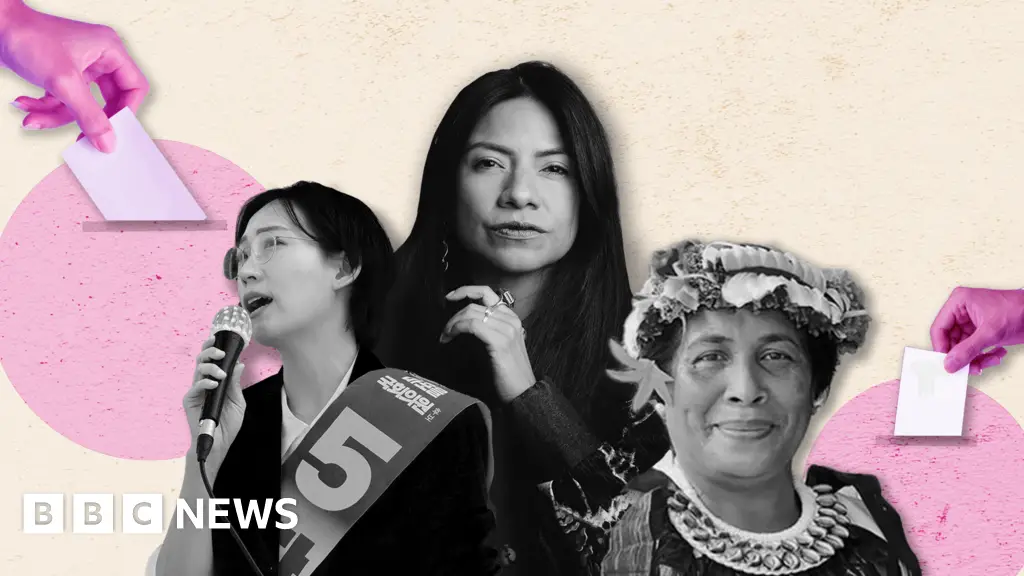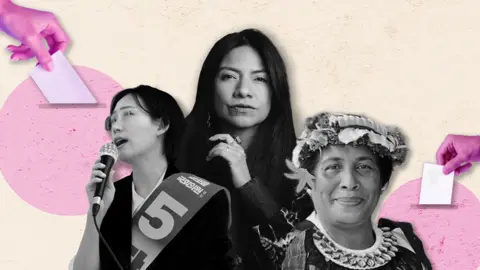 BBC
BBCNearly half of the world’s population – 3.6 billion people – faced major elections in 2024, but it was also a year in which the proportion of women grew at its slowest pace in 20 years.
There are now fewer women represented in 27 new parliaments than before the elections – in countries such as the USA, Portugal, Pakistan, India, Indonesia and South Africa. And for the first time in its history, fewer women were elected to the European Parliament.
The BBC has taken figures from 46 countries where election results have been certified and found that this is the case in almost two thirds of these countries the number of women elected declined.
The data comes from the Inter-Parliamentary Union (IPU) – a global organization of national parliaments that collects and analyzes election data.
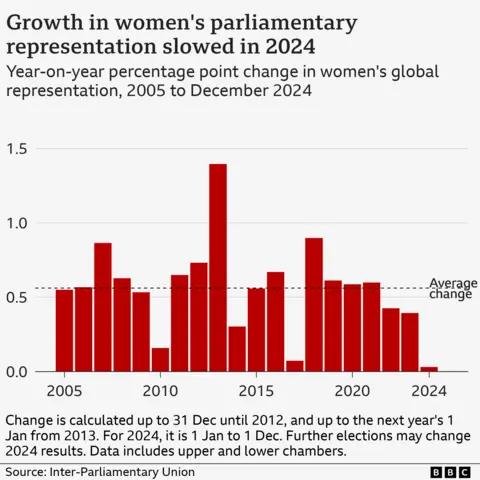
There were gains for women Great BritainMongolia, Jordan and the Dominican Republic, while Mexico And Namibia both elected their first female presidents.
However, due to losses elsewhere, growth this year is negligible (0.03%) – after doubling worldwide between 1995 and 2020.
Mariana Duarte Mutzenberg, who tracks gender statistics for the IPU, says progress has been “too fragile” in certain democracies. For example, the Pacific island nation of Tuvalu has lost its only female member of parliament and now has no women in government at all.
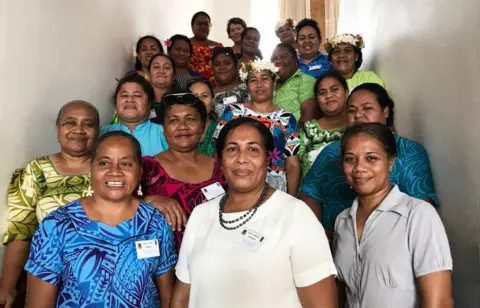 UNDP
UNDPThe Pacific Islands have the lowest proportion of female parliamentarians in the world at 8%.
Globally, women make up 27% of parliaments worldwide, and only 13 countries approach 50%. Latin America and parts of Africa are currently leading the way when it comes to female representation.
Some countries, says Ms. Duarte Mutzenberg, are still making progress, largely thanks to gender quotas – Mongolia rose from 10% to 25% this year after introducing a quota for women. mandatory 30% candidate Quota for women.
On average, countries without quotas elected 21% women, compared to 29% with quotas.
For example, quotas – and political will – helped Mexico reach gender parity in 2018 after former President Andrés Manuel López Obrador decided that parliament should be 50% women.
Political will could also play a crucial role in ministerial posts, says Julie Ballington of UN Women – which collects data on women at the top of government ministries.
Cabinets have the power to influence society but are still the least represented by women of all the policies UN Women studies, she says, with women typically limited to certain ministerial roles, such as oversight of human rights, equality and social affairs – and not finance or defense.
This is “a missed opportunity,” she says.
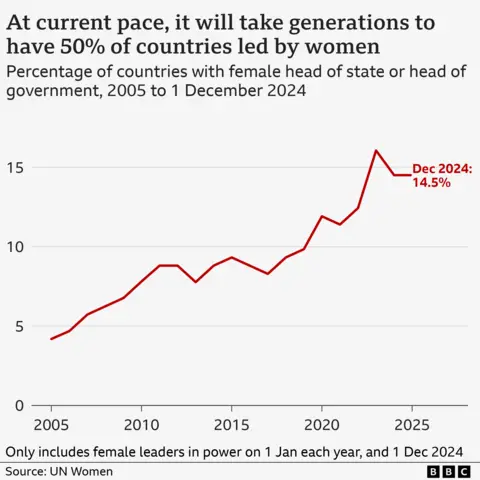
With so many different countries, contexts and political nuances at play, it’s hard to explain why the dial has barely moved this year.
However, there are some common barriers to women’s participation in politics.
First, research has shown that there is Ambition, gender gap.
“Women are less likely to wake up and think they would do well in senior leadership positions,” said politics professor Rosie Campbell an audience at King’s College, London. “They often need to be nudged: ‘Have you thought about becoming an MP?’”
And a slowdown could mean future female politicians have fewer female mentors, says Dr. Rachel George, an expert in gender issues and politics at Stanford University in the USA. Young women are “less likely to think that they can or should run for office.”
Once women decide to run for office, they are generally at a financial disadvantage.
A Abundance of research has found that it is more difficult for women to access funds for a political campaign or have the financial freedom to take time off from work.
In most societies, women still have more caring responsibilities than men – which can negatively impact how they are perceived by voters, says Dr. George.
It doesn’t help that only a few parliaments offer maternity leave, says Carlien Scheele from the European Institute for Gender Equality (EIGE). “It deters women when these policies are not implemented,” she says.
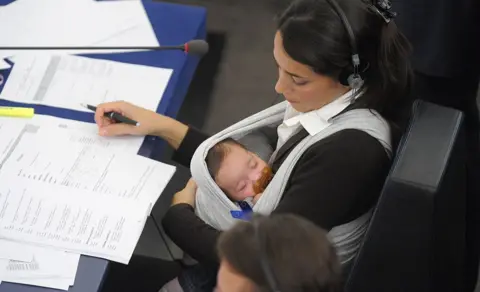 Getty Images
Getty ImagesAnd then there is the way electoral systems are designed.
According to the IPU, countries that use proportional representation (PR) or mixed electoral systems elect a higher proportion of women than majoritarian electoral systems and are also more likely to have voting quotas for women.
But these factors are not new. So what changes?
There has been an increase in attacks Women in public lifeonline and in person, according to studies in many different countries.
In Mexico, I’ve already experienced that Violent electionsAccording to the IPU’s Mariana Duarte Mutzenberg, gender-based violence has been particularly high this year, with female politicians also particularly targeted by disinformation aimed at “ruining their reputations in one way or another”.
This all has a greater “chilling effect” and deters younger women from wanting to run, says Dr. George.
A backlash against women’s economic empowerment and feminism is also a factor.
In South Korea, despite a slight increase in the proportion of women elected, many young men expressed a sense of reverse discrimination in this year’s elections.
“Some parties continued to stoke or exploit anti-gender sentiment among male voters, which women’s rights activists perceive as anti-men,” says Ms. Duarte Mutzenberg.
However, she says, this may have even led to this more women are voting.
Why does this all matter?
Apart from the basic fairness, Equal parliaments could improve economiessays EIGE’s Carlien Scheele, pointing to research showing that gender-diverse groups make better decisions and gender-diverse boards lead to higher profits.
Studies have also shown that Benefits of including women in peace negotiationssuggesting that processes based on substantive contributions from women are more likely to achieve sustainable outcomes.
“When women are in the room, peace agreements are more likely to happen.” rather permanent” says Dr. George.
Julie Ballington from UN Women says she would encourage people to think differently about women in politics.
“It’s not the underrepresentation of women. It’s the overrepresentation of men.”
Additional data analysis by Rebecca Wedge-Roberts from BBC Verify
Designed by Raees Hussain


